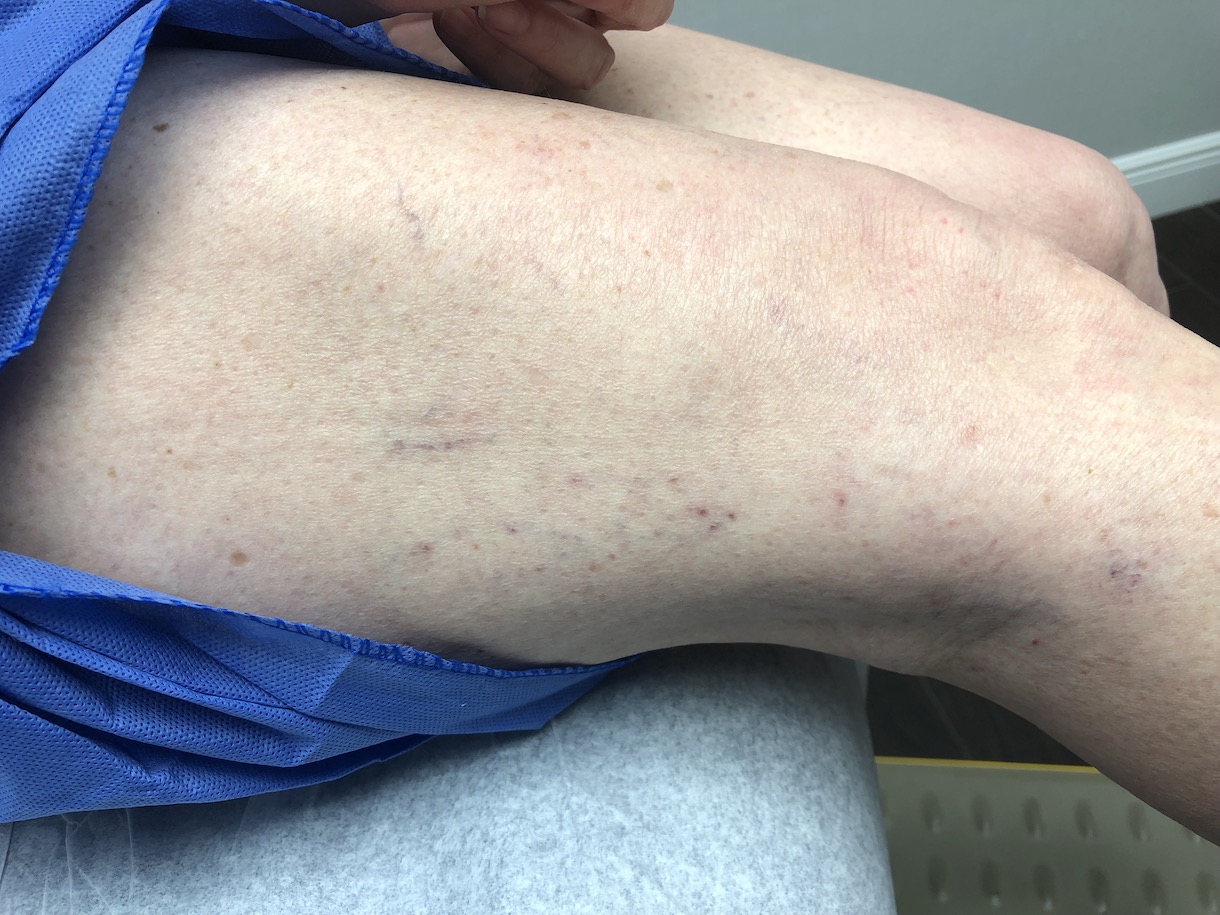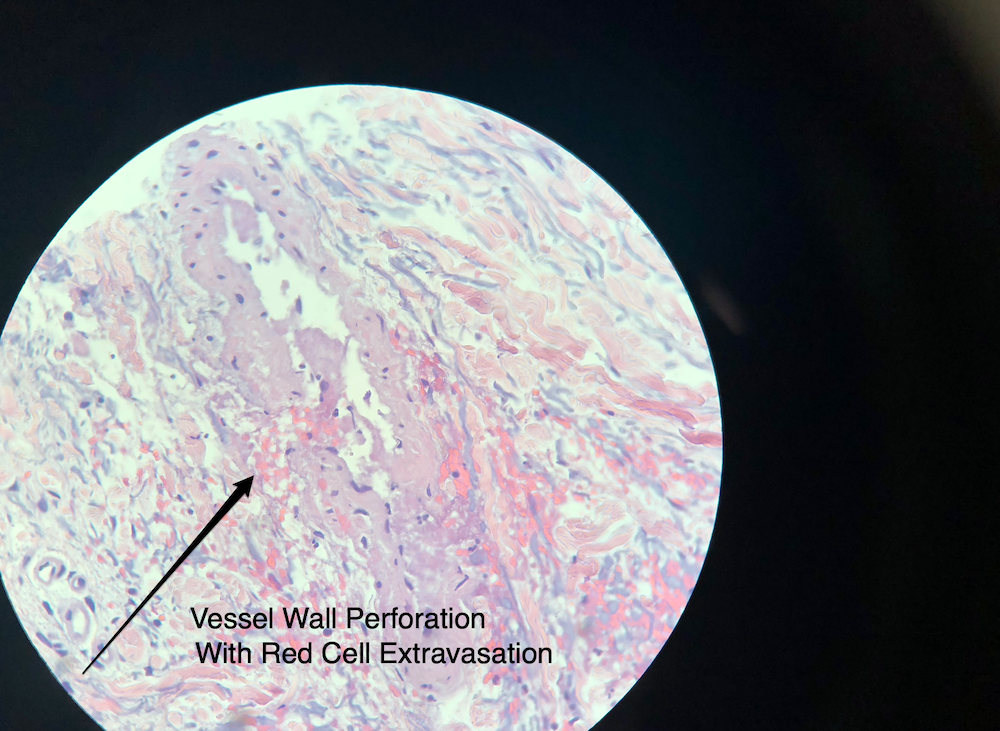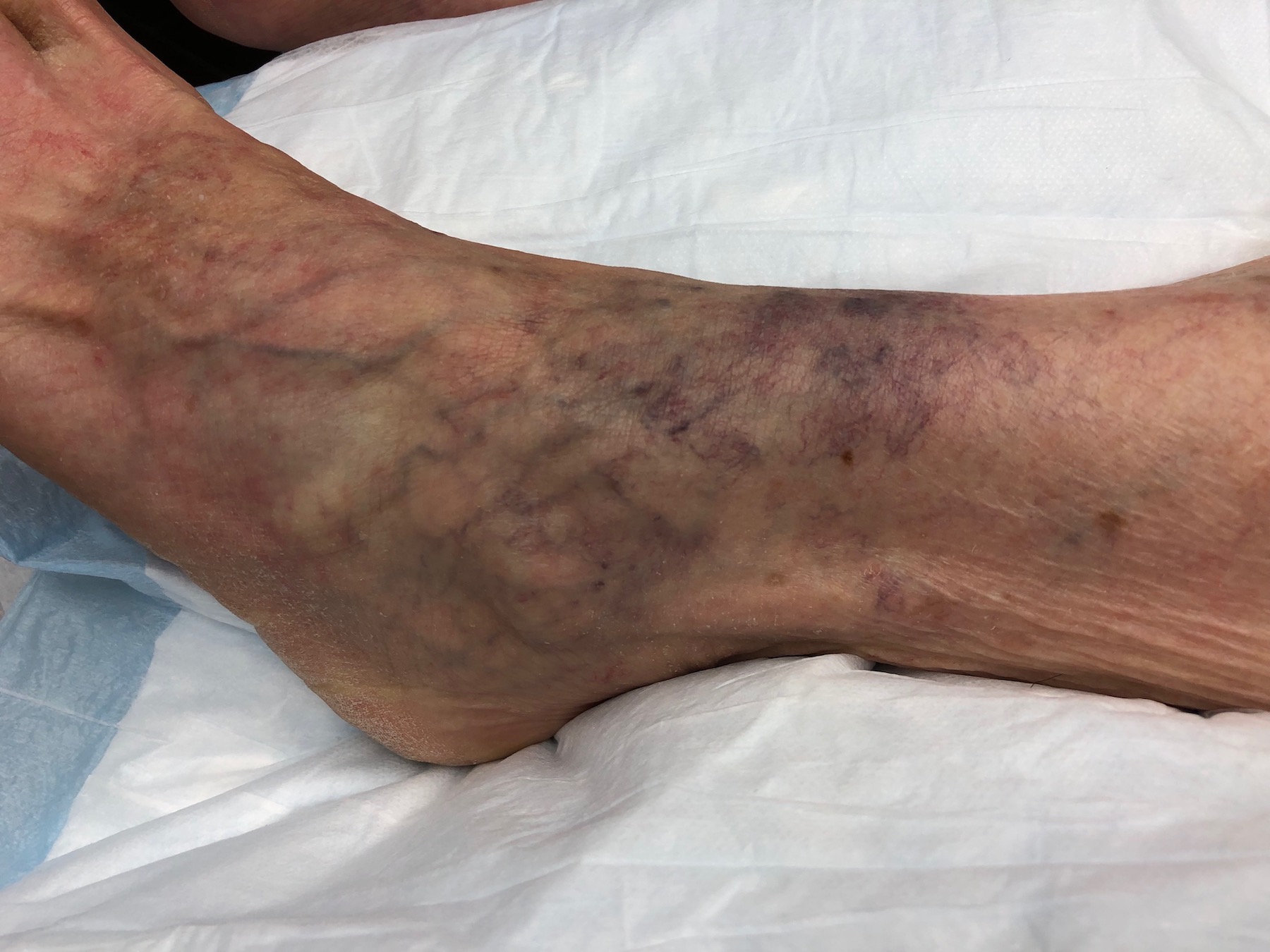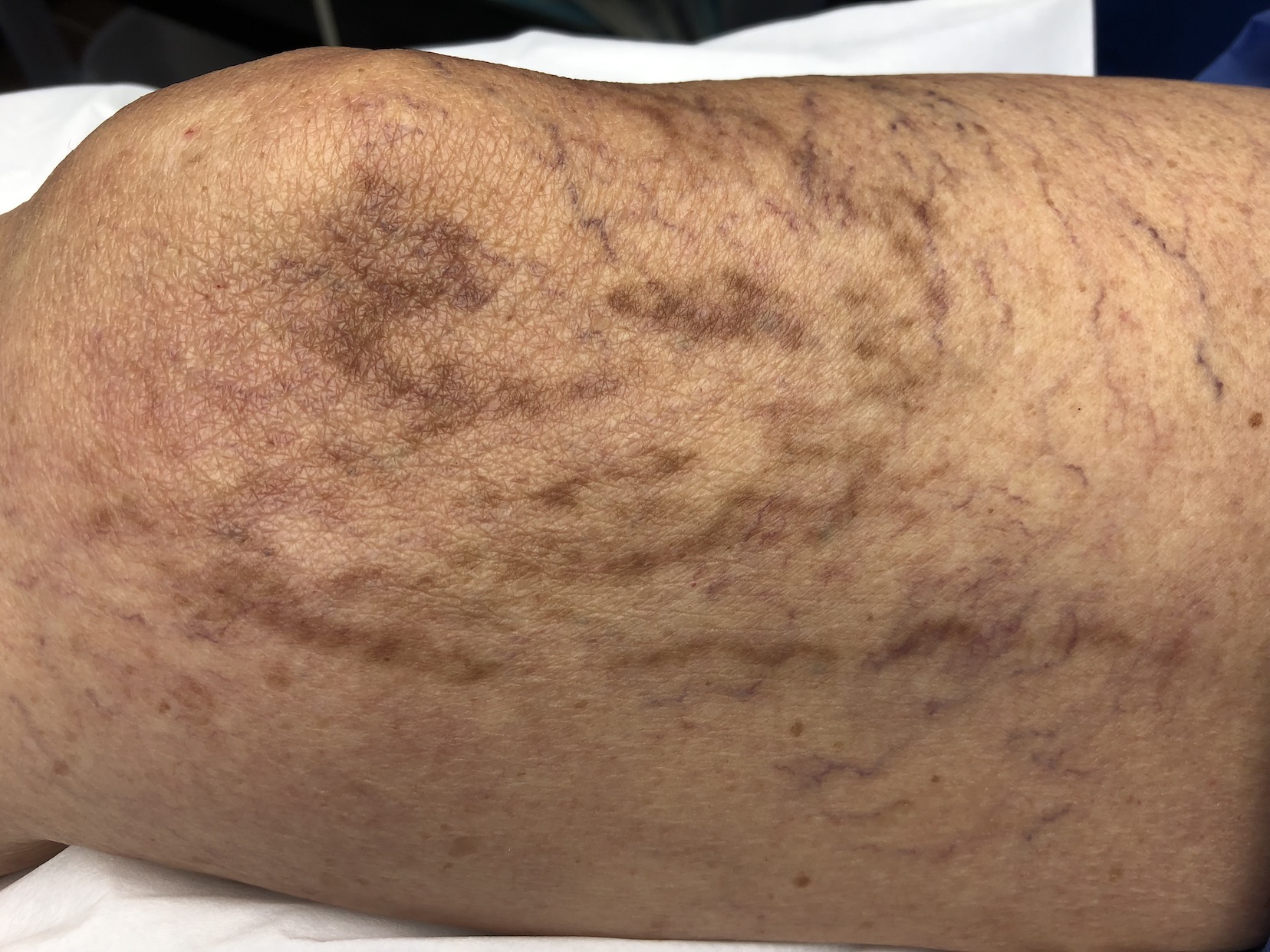Spiders Veins of the Foot That are Difficult to Clear
The image on the left is a patient with GSV insufficiency and will respond well to sclerotherapy. The patient on the right has no venous insufficiency and responds poorly to sclerotherapy. At the Aesthetic Vein Conference, we will share technique that we have found successful for the treatment of generalized essential telangiectasia.









